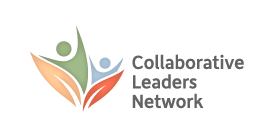
The challenge
Hawaiian Electric Company (HECO), long concerned about power transmission reliability on the island of Oahu, proposed the siting of towers supporting 128 kV power lines along Waahila Ridge, which cradles the eastern side of Manoa Valley. This was a very controversial project, both because of its location in Manoa and the opposition of Manoa residents, and because of individuals and groups whose opposition to Hawaiian Electric’s activities is virtually automatic. Well-organized and vocal community opposition to this project mobilized in ways that garnered a great deal of media coverage and elevated the public profile of the effort.
Ultimately, the State Department of Land and Natural Resources Board (DLNR) denied HECO’s permit application for the project. The community, anticipating that HECO would continue, was organizing a large public concert to raise funds, in part, to “fight HECO.” In a break from its past practices however, HECO did not appeal, and the abruptness of “the end” surprised those who were still gearing up for a fight.
Subsequent to the closure of the Wa‘ahila Ridge option, the company took a year to revisit the underlying reliability issue and, having confirmed its importance, began looking at alternative underground routes to achieve similar ends.
The process
This time, because of the negative outcome of the prior application, HECO made a concerted effort to be more transparent and inclusive in its decision-making process. Outside facilitators were brought in to facilitate a process that would seek out the public’s advice on the alternative project routes.
Strong structural design elements were put in place to allow project information to be shared and offer opportunities for individuals to participate, while also preventing the aggressive, verbal types of participants from controlling the process. In an effort to handle the commentary HECO expected to receive on the overall project, the facilitation team built into the process multiple meetings around island rather than only in the area where construction would take place.
The public meetings attracted large turnouts, with the majority of audible public comments and testimony vigorously opposing the proposed project. The process itself was heavily questioned, especially by those whose specific behavior was the reason for the process used by the facilitators. Meetings outside the immediate project area did not yield much special information.
Nonetheless, as a result of this second facilitated process, a 90% solution was arrived at, and an underground route was chosen to address the critical issue of power reliability. The revised project’s first phase was completed in June 2010.
Lessons learned
- As a utility, we carry our history with us, including whatever set of feelings our past actions/projects have caused. In this case, the controversy from the first process carried over to the next.
- Our company’s large size and monopoly can make a process that is controlled feel overly controlling. We need to be sensitive to this perception.
- Using an outside facilitator provides a neutral force in the room but does not create a direct relationship between the company and the audience. Pros and cons must be weighed for each process.
- Large consumers of HECO’s power (as represented by prominent local business leaders) and others were reluctant to vocalize their support for the project in public meetings. Alternate means of communicating questions and support (i.e., in writing) need to be available for attendees who are intimidated by confrontational individuals.
- Where meetings are held, and what the physical set up of the meetings will be, are critical.
- Knowing that a large turnout is likely, the site should be selected with an eye toward sufficient parking, room capacity, amplification, and lighting control. Rather than relying exclusively on hand-outs and verbal presentations, large groups might benefit from PowerPoint presentations.
- Knowing that HECO is likely to attract chronic critics as well as people opposed to a specific project under consideration, meetings need to be carefully designed to prioritize the concerns of the closest stakeholders.
- Knowing that any weaknesses in content or content delivery will invite and provoke challenges by certain audience members, presentations need to be well rehearsed.
- When the issue is contentious, it’s worth considering a neutral entity for the write-up.
- “Snow cards” are a useful tool for a number of reasons:
- They provide a richer array of issues and concerns than relying solely on verbal comments from the audience.
- They provide an audit trail of positive and negative concerns.
- They provide a quick reading of the most important issues and inform presenters about how to allocate their response time.
- They enable the conversational focus to be driven by more than just the volume or level of aggressiveness by some participants.
- While the snow card process was very effective in eliciting information and questions, there were lots of suspicions/comments about the “controlling nature” of the method. In the course of the meetings, there were substantial efforts to “beat the process,” and to find ways around the snow card process. Those who were motivated to circumvent the snow card methodology brought their own Post-it Notes, copied the comments, questions and observations offered at previous sessions, and attached those statements to the Post-it Notes being used in a given night.
- Personal attacks and confrontational behavior sometimes persist in spite of efforts to establish clear participation ground rules at the outset.
- Some decisions (e.g., choices on siting a facility) are unreasonable to expect citizen groups to be willing/able to decide.
- All decisions have a no-action option, but if a proponent believes they are obligated to move on some option, placing a no-action option on the table when it is not an acceptable answer is a tough call.
Tools and Tips
Tip: Weave in multiple presenters with subject matter expertise in addition to presentations by management and public information personnel.
Tip: Translate presentations into less technical terms without over simplification that might seem condescending.
Tool: Use snow cards to collect feedback from audience members reluctant to provide affirmative verbal testimony in the presence of vocal opposition to the project.
1. Audience members are invited to write questions on colored Post-it Notes. One color is given to attendees who sign in with a zip code closest to the meeting site and/or impact area. Another color is given to people visiting from outside the zip code. (This is applicable when you want to give priority attention to residents in the host community before hearing from others from more distant communities who may have a less direct stake in the issue.)
2. The Post-it Notes are collected in the course of the meeting and attached to an area of the wall marked with a variety of category headings. They are not sorted on the basis of support for or opposition, but rather clustered by subject matter.
At a glance, it’s possible to see how many questions or comments have been received around each issue. It’s also possible to locate the critical mass of immediately surrounding community members in attendance.
3. During the break, the facilitation team helps to identify sub-themes under each category and ascertain the order of issues to be addressed by representatives.
